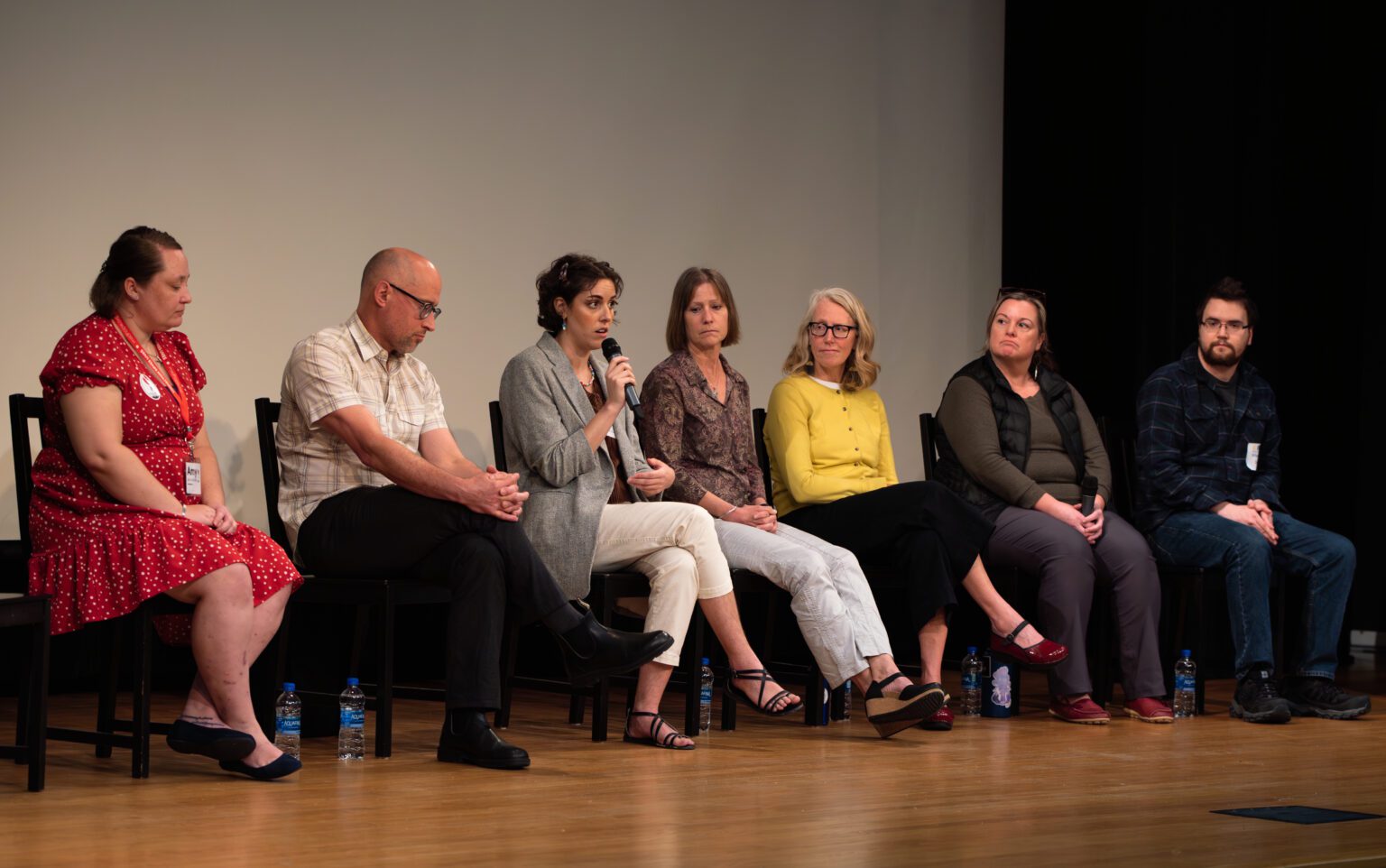Mental health concerns among youth are on the rise, said Laura Lupo, Meridian School District’s mental health coordinator, who has received over 100 referrals from students this year seeking counseling.
“There’s definitely a need, “ Lupo said. “We need services, [but] there’s a long waiting list. If someone’s seeking outside services, it can sometimes take 10 weeks or more.”
Lupo moderated a panel Wednesday, May 3 at Whatcom Community College, hosted by Whatcom County’s chapter of the National Alliance on Mental Illness (NAMI), aimed to shine a spotlight on youth mental health.
Around 75 people sat in attendance for the event, which also included a partial screening of Ken Burns’ docuseries “Hiding in Plain Sight: Youth Mental Illness.”
The panel included speakers from a variety of mental health backgrounds — from therapists to those with lived experience dealing with their own mental health conditions.

The shared sentiment among panelists was that youth mental health is a critical issue in the community, but there are major obstacles in the way of solving the crisis; chiefly, the stigma that surrounds seeking treatment for mental health conditions, and a lack of resources for those who ultimately do seek it out.
“NAMI Whatcom is trying to get our community talking more about mental health conditions,” said Kim Brown, NAMI Whatcom co-president. “There’s so much stigma — people just don’t want to talk about this topic — which makes people living with mental health conditions feel all the more isolated.”
NAMI Whatcom brings its 50-minute presentation “Ending the Silence” to schools throughout the county in hopes of starting conversations around mental health in the classroom.
The presentation allows NAMI Whatcom volunteers to share their own mental health journeys with students.
“When they see those with that lived experience, not only do they see validation in their own experiences, but they also see they’re not alone, and it gets better,” said Brylie Taylor, NAMI Whatcom peer coordinator.

Fighting past the stigma and seeking mental health treatment is only the first piece of the puzzle, Taylor said. The second part is actually being able to find care.
“It’s very difficult when we do these presentations and have students come up to us and actually ask us directly, ‘Where can I go? I have something I don’t know how to cope with and I’m having difficulty finding a therapist,’” Taylor said. “The unfortunate reality is there aren’t too many resources out there at the moment.”
Even for adults, Taylor said mental health care can be hard to access as demand increases. NAMI Whatcom hopes to bridge that gap any way it can, whether it be through one of its many support groups, or by simply lending a listening ear.
“We get a lot of folks that say [NAMI Whatcom] is the last person they call, but we’re the first that answered,” Taylor said. “Even if we don’t have the exact answer for them, or exactly what they’re looking for, just speaking to them from compassion can go a long way. Folks are a lot less likely to give up when someone just listens to them, so that’s a huge part of how we [try to address] the shortage of resources in the community.”
A previous version of this story misspelled Brylie Taylor’s first name. The story was updated to reflect this change at 1:33 p.m. on May 5. Cascadia Daily News regrets the error.



